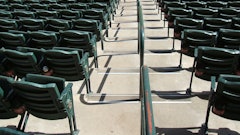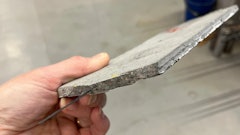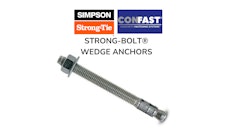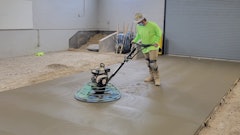
The New Hampshire woman had been in and out of hospitals for two years trying to discover the cause of her allergies and sleepless nights. With no relief in sight, she and her husband hired contractor Ed Saltalamacchia to assess and, if necessary, remediate the crawl space under their home.
What the 15-year veteran discovered may not seem particularly important to most homeowners. Yet living under the floor of the couple's dwelling was a common condition that threatens the health or may be responsible for killing thousands of unsuspecting people every year: standing water, moisture, and Radon gas.
Not convinced a mud puddle beneath a home matters much? Conclusive evidence reveals that wet basements and crawl spaces are the breeding ground for sickly mold spores and a conduit for deadly toxic gases. Both invisible enemies naturally rise through the floors of unprotected domestic structures; if not stopped, eventually they will destroy lives and living spaces.
Two months after Saltalamacchia sealed the crawl space under the couple's home, he received a call. The woman was no longer wheezing and she was sleeping through the night. "It made me feel great. It's the one thing I feel good about when doing this kind of work. I'm making a healthier living space for somebody, especially kids. I've got kids and grandkids and I wouldn't want them to be in and out of the hospital for no good reason. And it's a great opportunity to make good money."
Like many contractors, the owner of the Sutton-based Wet Basement Solutions was not always aware of how deadly mold and toxic gases could be. He was quickly educated when he began examining crawl spaces that were so lethal airborne particles would make his eyes burn.
He tried various sealants and techniques for capping the underworld of a home. But the plastics came in large rolls that were difficult to work with in tight crawl spaces, where dirt floors are uneven and boulders get in the way. And the adhesives couldn't guarantee an air-tight seal — essential when protecting families from marauding toxins.
About two years ago Saltalamacchia's quest for better solutions led him to basement and crawl space products by Emecole, Inc., of Romeoville, IL. He can now seal a crawl space in half the time it took with other products — a big savings in labor costs. Also, the insulating blankets he uses are flexible, easy to seal and provide several important benefits: a vapor barrier that outlasts and out-performs traditional insulation, radiant heat reflection that also prevents condensation, and an aluminum backing that keeps pests out.
"This system has a different product for each step of the work, and that makes my life a lot easier. Everything is quicker. We've tripled our business doing crawl spaces just by word of mouth. And it keeps out the mice and squirrels and everything else. We haven't had any calls saying the creatures have moved back in. I'm thrilled with it."
War of the Underworlds
On behalf of his Nevada clients and community, contractor Richard Walter has declared war on radon, micro-toxins and other silent underworld killers. To make clear why he is so adamant, the 38-year veteran of crawl space syndrome reads aloud the headline from a local paper — Dangerous Gas May Lurk in One-Third of Homes — and then sadly shares some startling statistics: Every year more than 20,000 non-smokers die of lung cancer.
A significant portion of these fatalities can be linked to exposure to radon, a naturally occurring radioactive gas that is present in rocks and soils. According to the U.S. Environmental Protection Agency, when radon enters an enclosed space such as a house, high concentrations may lead to an unacceptable health risk.
"We've got radon everywhere, we've lost thousands of lives to gas poisoning, but not enough people are aware of it. These are things that are happening to us that are unnecessary. We can eliminate the gas for pennies," says the CEO and owner of Gardnerville-based A+ Engineering Construction.
Walter's healthy-house awareness deepened considerably as he became more involved as an expert witness in construction lawsuits. The common presence of molds, micro-toxins and various contaminants is the main reason for much of this type of litigation, he says. But those problems wouldn't exist if homeowners understood the first barrier of defense: eliminate all water and moisture.
A turning point for Walter came when a lawyer awarded his company a job that no other contractor would take: the remediation of 140 crawl spaces in a subdivision of 300 homes. Standing water had accumulated because the spaces were dug lower than the ground level surrounding the dwellings. He knew he would need quality sealants, pumps and other products. He also became convinced that the entire industry would benefit from a reputable, single-source supplier that could provide superior basement and crawl space repair systems. He went looking.
"I got involved with Emecole because they have solutions that work and they care about people. They're always talking about how to improve, and they've got good customer service and some of the best products out there."
Ironically, the underworld war has been exacerbated by some modern improvements. New homes are built to improve energy efficiency, which means they cannot easily exhale the gases and mold spores that migrate from the bottom up.
"In the 1960s, we had more breathable structure, so gas could filter out. Today we live in a zip-lock plastic bag. That's why we're seeing higher levels of contamination and more sick-building syndrome. That's why I now look at the foundation, crawl space, basement and home as one unit. My concern is the overall quality of the air in the house. That the air you breathe is good for you, your babies and your grandparents. We need to educate people about the potential dangers of, and the health hazards produced by radon gas."
A Green Opportunity
Walter believes contractors have a responsibility to help homeowners understand what lurks in the underbelly of most domains. Like Saltalamacchia in New Hampshire, he also sees a business opportunity for contractors who recognize that America is going Green and people will pay a bit more for a home that is built for clean living.
"First, from the standpoint of the economy, just tell your customer that the first thing you'd like to leave them with is a protected structure. Secondly, as people become more aware, they'll be asking realtors if that house on the market has a clean air certificate. Most new homes now have an energy standard to live up to. Now what about a health standard?"
Saltalamacchia agrees and also sees a need to warn homeowners who are about to spend a lot of money for a new addition that will be built over a wet foundation. "I've gone into a home with a $30,000 new addition. I go in the crawl space and the floor joists are rotting from the moisture. To spend that kind of money without protecting the main cause of mold is crazy. Once water is in the crawl space or basement it's not going away, unless you do something about it."
Both Saltalamacchia and Walter believe common sense and the will to do good in the community will only bring contractors more of what they want — loyal, grateful clients. Says Walter, "Take it upon yourself to tell the homebuyer or owner that it's best to put an extra few thousand dollars in the home to protect from deadly gases. If I promote that to the builder, I believe I can also sell that to the home buyer. Let's just be good neighbors."
For more information, contact Emecole, Inc., by writing to 50 E. Montrose Dr. P.O. Box 7486, Romeoville, IL 60446; phone, 800-844-2713or fax, 815-372-3893, E-mail [email protected] or visit the web site: http://www.emecole.com
Author Douglas Glenn Clark is a writer based in the Los Angeles area.



























